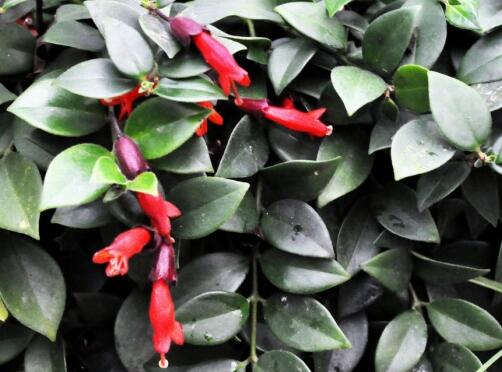The planting technique of stone see wear
Stone see wear, also known as purple ginseng, its whole grass can be used in medicine, with the effects of promoting blood circulation and removing blood stasis, clearing heat and detoxification, detumescence and pain. It is a relatively common plant in rural areas. According to modern research, it can also inhibit the growth of tumor cells, and the demand is increasing sharply. So how should stone be planted? Let's take a look.

1. Land selection and preparation
Stone wears a warm or cool climate, often grows on hillsides, roadsides and field grass, and is generally cultivated in the north in the warm season. Choose a plot with high terrain, deep soil layer, loose and fertile soil and good drainage for planting. After selecting the land, remove the residual weeds from the plot, turn the soil 20-30 cm deep, make it naturally weathered, and then apply base fertilizer to make the border or ridge ready for planting.
2. Methods of reproduction
In production, seeds are generally used to propagate, harvest the seeds when they are mature, remove impurities, store them and reserve them, and start sowing in March-April of spring. First of all, open a shallow trench on the border surface according to the row spacing of 30-35 cm, sow the seeds evenly into the ditch, about 1 cm of soil cover, not too deep, so as to avoid difficulties in seed emergence. After sowing, water once, cover a layer of straw, heat preservation and moisture, in order to facilitate the emergence of seedlings, so that about half a month later.
3. Field management
After the seedlings are completed, the seedlings should be carried out in time, and at the same time, the seedlings should pay attention to weeding and loosening the soil, weeding should be done frequently, manual weeding is recommended to ensure that there are no weeds in the field, and it should not be too deep when loosening the soil, so as to avoid damage to the root system and affect the normal growth of the seedlings. In order to speed up the growth of seedlings, thin fertilizer and water can be properly applied 1-2 times in the seedlings, timely watering in drought to keep the soil moist, which is beneficial to the growth of seedlings, and timely drainage and waterlogging prevention in the rainy season to avoid root rot and death of seedlings.
4. Harvest
It can be seen that Chuanben is a wild plant with strong environmental adaptability, so there are few diseases and insect pests when planting, and conventional methods can be used to control diseases and insect pests. In the stone see wear flowering, in addition to the remaining fields, the rest of the fields can be harvested, the whole process will be harvested, fresh or sun-dried.
The above is the introduction of Shi Jianchuan's planting technology. I hope it can help you. If you want to know more about it, please follow us.
- Prev

Lipstick hanging orchid leaves how to do the correct culture method to share
Lipstick hanging orchid can watch both flowers and leaves, which is very easy to survive, so it is a good plant to breed, but many friends often encounter abnormal leaves in the process of maintenance, and even lose leaves in serious cases. Lipstick hanging orchid leaves how to do? Let's take a look at the details today.
- Next

Common Diseases and insect pests of Ginseng and their Control
Common Diseases and insect pests of Ginseng and their Control
Related
- Fuxing push coffee new agricultural production and marketing class: lack of small-scale processing plants
- Jujube rice field leisure farm deep ploughing Yilan for five years to create a space for organic food and play
- Nongyu Farm-A trial of organic papaya for brave women with advanced technology
- Four points for attention in the prevention and control of diseases and insect pests of edible fungi
- How to add nutrient solution to Edible Fungi
- Is there any good way to control edible fungus mites?
- Open Inoculation Technology of Edible Fungi
- Is there any clever way to use fertilizer for edible fungus in winter?
- What agents are used to kill the pathogens of edible fungi in the mushroom shed?
- Rapid drying of Edible Fungi

